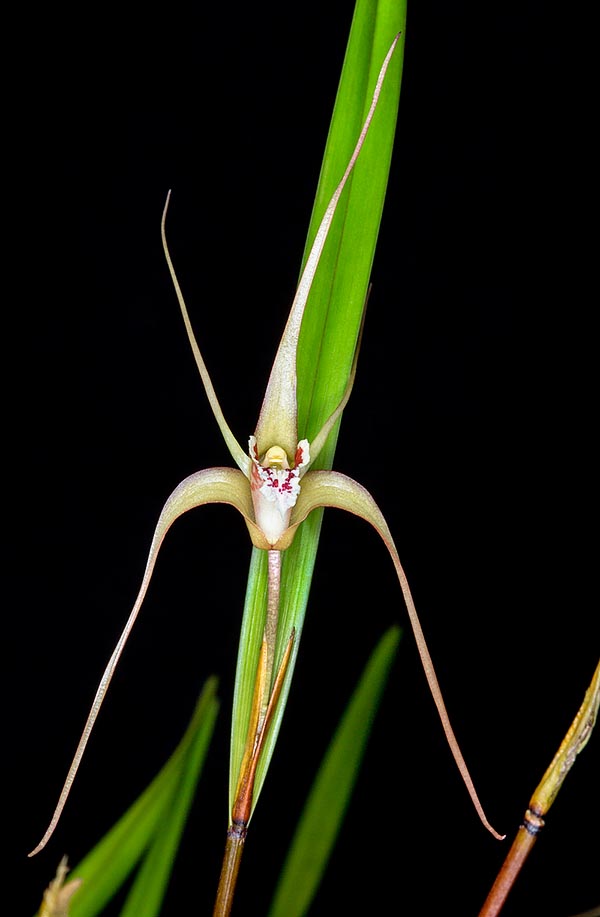Family : Orchidaceae

Text © Pietro Puccio

English translation by Mario Beltramini

Little known in cultivation, Dendrobium textile forms big tufts in the Sulawesi island humid forests © Giuseppe Mazza
The name of the genus is the combination of the Greek substantives “δένδρον” (dendron) = tree and “βίος” (bios) = life, with reference to the numerous species of the genus living on the trees; the specific name is the Latin adjective “textilis, e” = intertwined, of unclear reference.
The Dendrobium textile J.J.Sm. (1932) is an epiphytic species with creeping rhizome that forms dense tufts with erect pseudobulbs, cylindrical, thin, slightly enlarged at the base, 10-25 cm long, of dark green to brown colour, provided at the apex of one single linear leaf thinner at both ends and brefly bifid at the apex, 10-15 cm long and about 1 cm broad. Terminal inflorescences bearing one single flower, on a 2 cm long peduncle, with sepals and petals of yellowish colour with red spottings, of 5-7 cm of diameter; pedicel and ovary 3 cm long. Long pointed triangular dorsal sepal, 3,6-4 cm long and 0,7-0,9 cm broad at the base, lateral sepals 3,5-5,2 cm long and 0,8-1 cm broad, united at the base of the column to form an obtuse spur (mentum) about 0,4cm long. Linear petals with long pointed apex, 3,5-4,5 cm long and 1-2 mm broad at the base, curved trilobed labellum, 1,2-1,6 cm long (spread) and 0,9-1 cm broad, with erect lateral lobes at the sides of the column and ovate median lobe with apiculate apex and wavy margins, run from the base up to almost the apex by two wavy lamellae, plus a third one between the two in the median lobe; the column is about 1,2 cm long.
It reproduces by seed, in vitro, and at amateur level by division, with each section provided of at least 4-5 pseudobulbs.
Species with elegant blooming and particular vegetation, rare in cultivation, that would deserve a better presence in the collections of the orchidophilous enthusiasts. On the base of the climate characteristics of the origin area the most appropriate collocation is that of a semi-shaded and aerated greenhouse with medium-high temperatures, 20-32 °C, with lowest values not under the 16 °C, and high humidity, 75-85%. Regular and abundant waterings during the growth of the pseudobulbs, slightly more spaced during the vegetative rest, utilizing rain water, demineralized or by reverse osmosis. It adapts to be cultivated in pots or baskets with draining and aerated compost based on medium sliced bark fragments, with possible addition of sphagnum if the place of cultivation is rather dry, in order to maintain a greater humidity at the base of the plant.
Synonyms: Diplocaulobium textile (J.J.Sm.) P.F.Hunt & Summerh. (1961).
→ For general notions about ORCHIDACEAE please click here.
